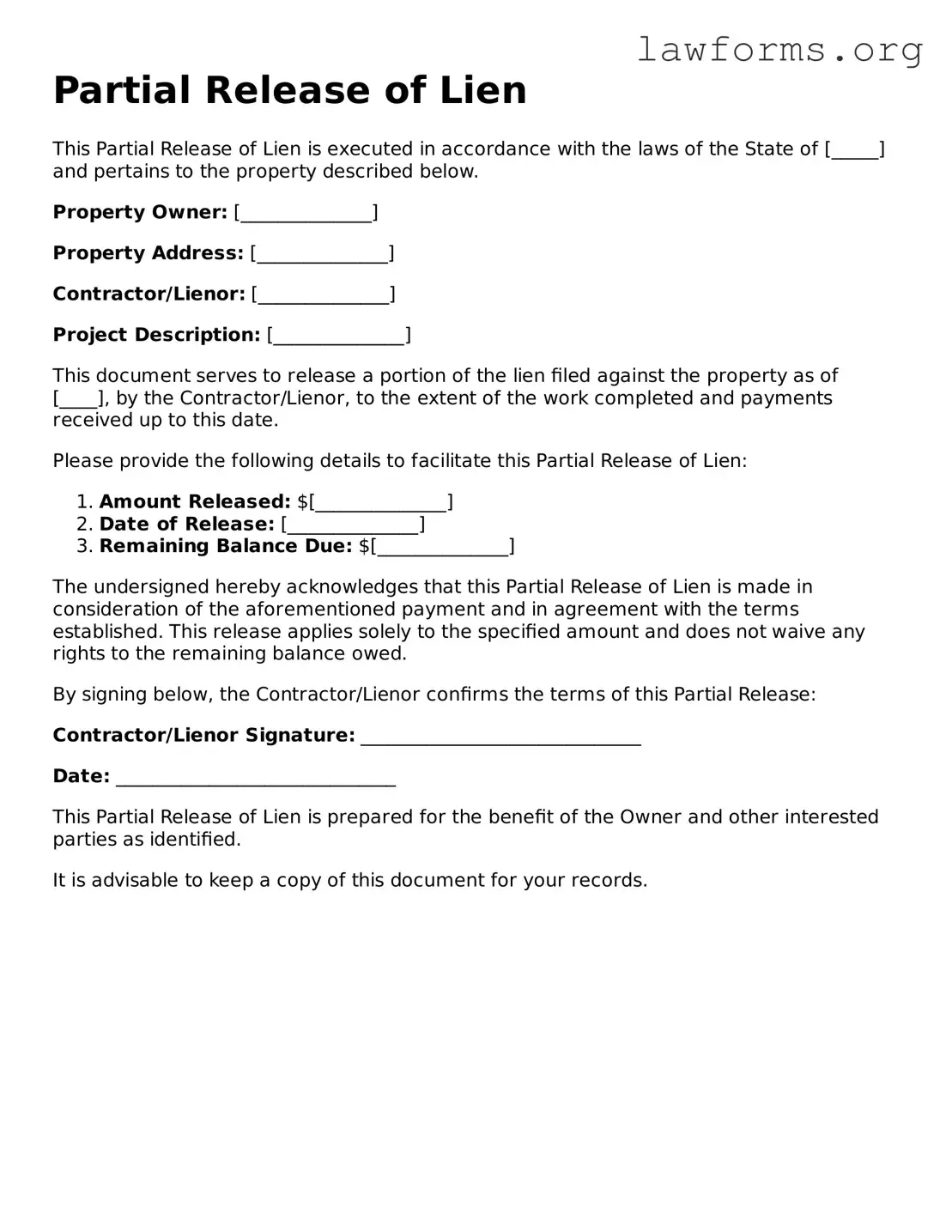Partial Release of Lien
This Partial Release of Lien is executed in accordance with the laws of the State of [_____] and pertains to the property described below.
Property Owner: [______________]
Property Address: [______________]
Contractor/Lienor: [______________]
Project Description: [______________]
This document serves to release a portion of the lien filed against the property as of [____], by the Contractor/Lienor, to the extent of the work completed and payments received up to this date.
Please provide the following details to facilitate this Partial Release of Lien:
- Amount Released: $[______________]
- Date of Release: [______________]
- Remaining Balance Due: $[______________]
The undersigned hereby acknowledges that this Partial Release of Lien is made in consideration of the aforementioned payment and in agreement with the terms established. This release applies solely to the specified amount and does not waive any rights to the remaining balance owed.
By signing below, the Contractor/Lienor confirms the terms of this Partial Release:
Contractor/Lienor Signature: ______________________________
Date: ______________________________
This Partial Release of Lien is prepared for the benefit of the Owner and other interested parties as identified.
It is advisable to keep a copy of this document for your records.
